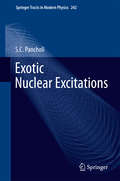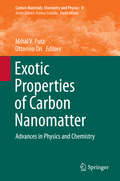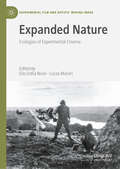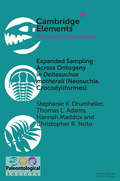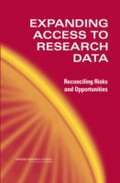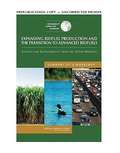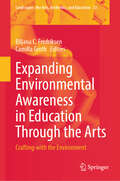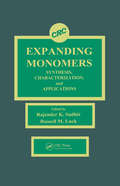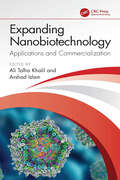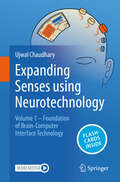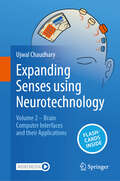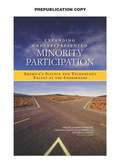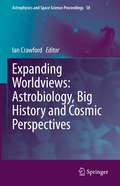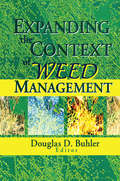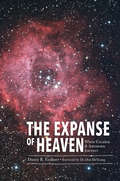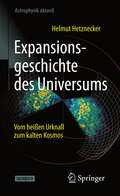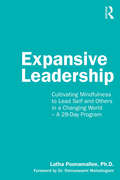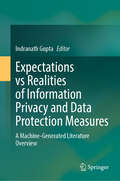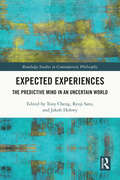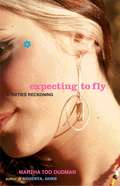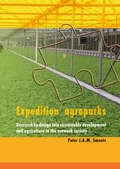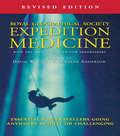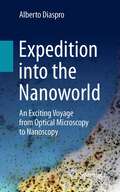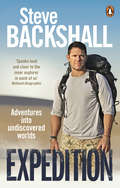- Table View
- List View
Exotic Nuclear Excitations
by S. C. PancholiBy providing the reader with a foundational background in high spin nuclear structure physics and exploring exciting current discoveries in the field, this book presents new phenomena in a clear and compelling way. The quest for achieving the highest spin states has resulted in some remarkable successes which this monograph will address in comprehensive detail. The text covers an array of pertinent subject matter, including the rotational alignment and bandcrossings, magnetic rotation, triaxial strong deformation and wobbling motion and chirality in nuclei. This book offers a clearly-written and up-to-date treatment of the topics covered. The prerequisites for a proper appreciation are courses in nuclear physics and nuclear models and measurement techniques of observables like gamma-ray energies, intensities, multi-fold coincidences, angular correlations or distributions, linear polarization, internal conversion coefficients, short lifetime (pico-second range) of excited states etc. and instrumentation and data analysis methods.
Exotic Properties of Carbon Nanomatter
by Mihai V. Putz Ottorino OriThis title reports the state-of-the-art advancements in modeling and characterization of fundamental and the recently designed carbon based nanocomposites (graphenes, fullerenes, polymers, crystals and allotropic forms). Written by leading experts in the field, the book explores the quantification, indexing, and interpretation of physical and chemical exotic properties related with space-time structure-evolution, phase transitions, chemical reactivity, and topology. Exotic Properties of Carbon Nanomatter is aimed at researchers in academia and industry.
Expanded Nature: Écologies du cinéma expérimental (Experimental Film and Artists’ Moving Image)
by Elio Della Noce Lucas MurariThis book explores the emergence of ecological consciousness in the work of contemporary experimental filmmakers. If it can be said that experimental filmmakers are "expanding" the artistic field through an exploration of the potencies, modes of dissemination and performance of the moving image, in the Anthropocene these practices strive for another kind of expansion: to expand our experience of nature. Appending flowers to the film strip or burying it in the ground, inventing observational devices, allowing the camera to be affected by natural forces, engaging one's own filming body in a symbiotic relationship with the environment, reconstituting ecosystems at the moment of projection: the ecologies of experimental cinema presented in this book constitute forms of practice and engagement that awaken a heightened sensibility towards the living world through cooperative links, casting other beings as subjects and agents of filmic processes, and, finally, reshaping the economy of filmmaking. Thus, ecologies of perception, medium, production, and multinaturalism are deployed, contributing to the restoration of our sensory bond with the natural world. Several chapters were translated with the help of artificial intelligence. In each case, the text has subsequently been revised further by the author as well as the translator Charlie Hewison and a professional copy editor.
Expanded Sampling Across Ontogeny in Deltasuchus motherali: Revealing Ecomorphological Niche Partitioning and Appalachian Endemism in Cenomanian Crocodyliforms (Elements of Paleontology)
by Stephanie K. Drumheller Thomas L. Adams Hannah Maddox Christopher R. NotoNew material attributable to Deltasuchus motherali, a neosuchian from the Cenomanian of Texas, provides sampling across much of the ontogeny of this species. Detailed descriptions provide both information about the paleobiology of this species, particularly with regards to how growth and development affected diet. Overall snout shape became progressively wider and more robust with age, suggesting that dietary shifts from juvenile to adult were not only a matter of size change, but functional performance as well. These newly described elements provide additional characters upon which to base more robust phylogenetic analyses. The authors provide a revised diagnosis of this species, describing the new material and discussing incidents of apparent ontogenetic variation across the sampled population. The results of the ensuing phylogenetic analyses both situate Deltasuchus within an endemic clade of Appalachian crocodyliforms, separate and diagnosable from goniopholidids and pholidosaurs, herein referred to as Paluxysuchidae.
Expanding Access to Research Data: Reconciling Risks and Opportunities
by Panel on Data Access for Research PurposesPolicy makers need information about the nation—ranging from trends in the overall economy down to the use by individuals of Medicare—in order to evaluate existing programs and to develop new ones. This information often comes from research based on data about individual people, households, and businesses and other organizations, collected by statistical agencies. The benefit of increasing data accessibility to researchers and analysts is better informed public policy. To realize this benefit, a variety of modes for data access— including restricted access to confidential data and unrestricted access to appropriately altered public-use data—must be used. The risk of expanded access to potentially sensitive data is the increased probability of breaching the confidentiality of the data and, in turn, eroding public confidence in the data collection enterprise. Indeed, the statistical system of the United States ultimately depends on the willingness of the public to provide the information on which research data are based. Expanding Access to Research Data issues guidance on how to more fully exploit these tradeoffs. The panel’s recommendations focus on needs highlighted by legal, social, and technological changes that have occurred during the last decade.
Expanding Biofuel Production and the Transition to Advanced Biofuels: Lessons for Sustainability from the Upper Midwest
by National Research Council of the National AcademiesWhile energy prices, energy security, and climate change are front and center in the national media, these issues are often framed to the exclusion of the broader issue of sustainability--ensuring that the production and use of biofuels do not compromise the needs of future generations by recognizing the need to protect life-support systems, promote economic growth, and improve societal welfare. Thus, it is important to understand the effects of biofuel production and use on water quality and quantity, soils, wildlife habitat and biodiversity, greenhouse gas emissions, air quality, public health, and the economic viability of rural communities.
Expanding Environmental Awareness in Education Through the Arts: Crafting-with the Environment (Landscapes: the Arts, Aesthetics, and Education #33)
by Biljana C. Fredriksen Camilla GrothChapters “Crafting in Dialogue with the Material Environment” and “Soil Laboratory: Crafting Experiments in an Exhibition Setting” are available open access under a Creative Commons Attribution 4.0 International License via [link.springer.com|http://link.springer.com/].thors’ own experiences with phenomena they are trying to understand and critically explore. This book is of interest to professional creative practitioners, art and craft educators, art teacher educators or researchers in the field of creative practices. It has power to inspire rethinking of present educational practices, to ignite critical reflections about materials and more-than-humans, and, hopefully, motivate transformations toward more ecologically sustainable ways of life.
Expanding Monomers: Synthesis, Characterization, and Applications
by Rajender Kumar Sadhir Mr. Russell LuckExpanding Monomers: Synthesis, Characterization, and Applications provides a thorough discussion of expanding polymer systems and their potential applications. The scope of the book includes background information on conventional monomers, their polymeric systems, and associated shrinkage problems. Monomers that expand during polymerization are covered in detail, including their synthesis and characterization. Polymerization (homopolymerization and copolymerization) of expanding monomers is discussed, in addition to mechanisms and kinetics of several polymerization processes, such as cationic initiation and free radical ring-opening polymerization. The book also explores various applications in which expanding polymer systems have potential. These applications include coatings, casting and potting materials, composite adhesives, and electrical insulations. Expanding Monomers: Synthesis, Characterization, and Applications will be valuable as a reference for manufacturers, researchers, teachers, and students in polymer and materials science, in addition to industry and university libraries.
Expanding Nanobiotechnology: Applications and Commercialization
by Ali Talha Khalil Arshad IslamThis book will cover recent and advanced concepts in nanobiotechnology, with deep focus on their applications and commercialization.Expanding Nanobiotechnology: Applications and Commercialization covers topics like green synthesis, microbial synthesis and their applications in medicine, imaging and nanotheranostics. It also includes success stories in food, energy and environment. The book explains the mechanistic insights in the biological synthesis of nanoparticles and includes discussion on the toxicity and interaction with the natural systems in detail. The chapters also examine synthesis and fabrication aspects in a concise manner. The book also highlights the possible therapeutic and imaging applications of biogenic nanomaterials in cancer therapies and explains the diverse mechanisms. The authors also present the hurdles, issues and concerns that hinder the large-scale commercial applications of the biogenic nanoparticles. Finally, apart from detailed discussion on the advanced futuristic applications of nanobiotechnology, specific contributions covering important topics like sustainability, ethics and dual use research concerns are included.This book is intended for researchers, biotechnologists, microbiologists and entrepreneurs spanning across diverse areas, including medicine, energy and the environment.
Expanding Senses using Neurotechnology: Volume 1 ‒ Foundation of Brain-Computer Interface Technology
by Ujwal ChaudharyThis book is an essential guide for students, researchers, and professionals in the interdisciplinary field of neurotechnology. This comprehensive volume delves into the intricate world of brain signal acquisition, exploring both invasive and non-invasive techniques like EEG, fNIRS, fMRI, and DBS. Through case studies, including groundbreaking communication systems for ALS patients and neurofeedback mechanisms, readers will learn how theoretical concepts are transformed into life-changing technologies. The book traces the historical milestones of neurotechnology and discusses the latest advancements in brain signal processing and neurostimulation techniques. Readers will gain an understanding of how machine learning models enhance neurotechnology applications and how ethical considerations shape the future of this rapidly evolving field. This book offers invaluable insights into the tools, techniques, and applications that are revolutionizing the way we understand and interact with the human brain. Join us on a journey through the past, present, and future of neurotechnology, and discover how this fascinating field is poised to transform healthcare, enhance human capabilities, and improve the quality of life for millions worldwide. This book contains 120 questions and answers: Download the Springer Nature Flashcards App free of charge and use exclusive additional material to test your knowledge.
Expanding Senses using Neurotechnology: Volume 2 ‒ Brain Computer Interfaces and their Applications
by Ujwal ChaudharyThis book provides a comprehensive exploration of the transformative field of brain-computer interfaces (BCIs) and neurotechnology. As the fusion of neuroscience, engineering, and artificial intelligence advances, this textbook guides readers through foundational principles and recent innovations that are reshaping how we understand and enhance brain-body abilities. From non-invasive BCIs and their role in communication and motor restoration to invasive BCIs designed for individuals with locked-in syndrome and beyond, each chapter delves into cutting-edge applications, including neurofeedback therapy and treatments for neuropsychiatric conditions like ADHD and depression. Additionally, the textbook addresses the crucial ethical, legal, and societal implications, exploring concerns over mental privacy, informed consent, and the commercialization of brain data. Intended for students, researchers, and professionals in neuroscience, biomedical engineering, and related fields, this text serves as both a technical guide and an ethical roadmap to the profound future of neurotechnology. This book contains more than 110 questions and answers: Download the Springer Nature Flashcards App free of charge and use exclusive additional material to test your knowledge.
Expanding Underrepresented Minority Participation: America'S Science and Technology Talent at the Crossroads
by National Academy Of Sciences National Academy of Engineering Institute of Medicine of the National AcademiesIn order for the United States to maintain the global leadership and competitiveness in science and technology that are critical to achieving national goals, we must invest in research, encourage innovation, and grow a strong and talented science and technology workforce. Expanding Underrepresented Minority Participation explores the role of diversity in the science, technology, engineering and mathematics (STEM) workforce and its value in keeping America innovative and competitive. According to the book, the U.S. labor market is projected to grow faster in science and engineering than in any other sector in the coming years, making minority participation in STEM education at all levels a national priority. Expanding Underrepresented Minority Participation analyzes the rate of change and the challenges the nation currently faces in developing a strong and diverse workforce. Although minorities are the fastest growing segment of the population, they are underrepresented in the fields of science and engineering. Historically, there has been a strong connection between increasing educational attainment in the United States and the growth in and global leadership of the economy. Expanding Underrepresented Minority Participation suggests that the federal government, industry, and post-secondary institutions work collaboratively with K-12 schools and school systems to increase minority access to and demand for post-secondary STEM education and technical training. The book also identifies best practices and offers a comprehensive road map for increasing involvement of underrepresented minorities and improving the quality of their education. It offers recommendations that focus on academic and social support, institutional roles, teacher preparation, affordability and program development.
Expanding Worldviews: Astrobiology, Big History and Cosmic Perspectives (Astrophysics and Space Science Proceedings #58)
by Ian CrawfordThis book collates papers presented at two international conferences (held at the Australian National University in 2018 and Birkbeck College London in 2019) exploring the relationships between big history and astrobiology and their wider implications for society. These two relatively new academic disciplines aim to integrate human history with the wider history of the universe and the search for life elsewhere. The book will show that, despite differences in emphasis, big history and astrobiology share much in common, especially their interdisciplinary approaches and the cosmic and evolutionary perspectives that they both engender.Specifically, the book addresses the unified, all-embracing, nature of knowledge, the impact of big history on humanity and the world at large, the possible impact of SETI on astrobiology and big history, the cultural signature of Earth’s inhabitants beyond our own planet, and the political implications of a planetary worldview. The principal readership is envisaged to comprise scholars working in the fields of astrobiology, big history and space exploration interested in forging interdisciplinary links between these diverse topics, together with educators, and a wider public, interested in the societal implications of the cosmic and evolutionary perspectives engendered by research in these fields.
Expanding the Context of Weed Management
by Douglas BuhlerPresents innovative approaches to weeds and weed management. Expanding the Context of Weed Management is your key to the latest economically and environmentally friendly methods of managing weeds. You will explore the biological, cultural, mechanical, and preventive tools and techniques that are necessary to successfully manage weeds. Expanding the Context of Weed Management teaches you how to optimize your crop production and profit by integrating preventive techniques, scientific knowledge, and management skills into your current farming routine. This practical volume contains a series of review articles and original research that present innovative approaches to weeds and weed management. In its pages you will discover valuable and practical information about:how weeds can be considered a part of the cropping system instead of an isolated pest to beeliminatedwhy weeds behave as they doshort and long term approaches to changing weed managementstandard breeding methods for weed competitive cropshow to improve soil quality to manage weedshow to integrate pest management for weedshow to avoid propagule productionhow to reduce weed emergence in cropshow to minimize weed competition with the cropThe costliness of weeds and weed control is more than $15 billion a year in the United States.Expanding the Context of Weed Management will help you cut this cost with the latest methods of effective weed control. Intended for agronomists, weed scientists, crop advisors, environmentalists, students, and crop ecologists,this book provides a successful and environmentally sound perspective on weeds and their control.
Expanse of Heaven, The: Where Creation & Astronomy Intersect
by Danny FaulknerIntended as a companion book to The Created Cosmos: What the Bible Reveals About Astronomy, the new book, The Expanse of Heaven: Where Creation and Astronomy Intersect, is a comprehensive treatment of astronomy, interpreted within the biblical model of creation. It begins with a chapter on ancient cosmologies, and concludes with a chapter on modern cosmology. In between are chapters on the appearance of astronomical bodies in the sky, discussions of the moon, the earth and other planets in the solar system, the sun, the stars, our Milky Way Galaxy and other galaxies. Evolutionary theories are described and critiqued, while creationary theories are explained. Evidence for design and recent origin is presented. This unique book is intended for general reading by lay audiences, but it can be adapted as a textbook on astronomy. You will learn how unique the earth is in the universe You will see incredible design in the moon, the sun, and other astronomical bodies You will better understand the role of evolutionary and creationary theories in astronomy today
Expansionsgeschichte des Universums: Vom heißen Urknall zum kalten Kosmos (Astrophysik aktuell)
by Helmut HetzneckerDie Expansionsgeschichte des Universums stellt aktuelle kosmologische Forschung im Stil der Astrophysik-Aktuell-Reihe dar: knapp und kompakt, mit vielen Abbildungen für Hobbyastronomen und Physiklehrer. Die Entwicklung des Universums vom heißen Urknall bis zum kalten Kosmos wird hier aus physikalischer Sicht erzählt, beginnend mit der Geburt von Raum und Zeit, Struktur und Kraft, Strahlung und Materie. Helmut Hetzneckers Buch zeigt anhand der physikalischen Modelle, wie man aus der Strahlung von Sternen und Galaxien und dem Energieausbruch am Beginn des Urknalls die Evolutionsgeschichte des Universums entschlüsselt – mit einem Entwicklungsmodell, das Alexander A. Friedman und Georges H. Lemaître in den 1920er und 1930er Jahren erdachten und in dem auch Einsteins berühmte „Eselei“ ihren Platz gefunden hat: Die kosmologische Konstante, die uns nicht nur hilft, die großräumigen Verteilungsmuster der Galaxien und Superhaufen zu verstehen, sondern auch den Schlüssel liefert, um dem Rätsel der Dunklen Materie nachzuspüren. Helmut Hetznecker arbeitet auf dem Gebiet der kosmologischen Strukturbildung und der Struktur Dunkler Halos. Er promovierte 2001 am Max-Planck-Institut für Astronomie in Heidelberg, wo er bis Ende 2004 beschäftigt war. Seit 2005 gehört er der Arbeitsgruppe Computational Astrophysics an der Ludwig-Maximilians-Universität in München an.
Expansive Leadership: Cultivating Mindfulness to Lead Self and Others in a Changing World – A 28-Day Program
by Latha PoonamalleeThe structured 28-day mindfulness and contemplative journey presented in this book will help aspiring and current leaders to clarify their identities, and identify and reflect on their mental models to become more expansive leaders. The present moment demands new ways of being, doing, and relating with the world. To meet this moment, we need fresh, collective, inclusive, and interdependent models of leadership and new approaches to leadership development. This book goes beyond the ‘McMindfulness’ often seen in mindful leadership books, to offer a multi-faceted approach to develop a more interconnected sense of self and interdependence-centric mindsets needed for expansive leadership, through mindfulness practice. Through this practice, leaders can cultivate the ability to make deliberate choices using slow thinking and overcome any unconscious and implicit biases that are the result of fast-thinking processes. Anchored in insights from over ten years of teaching mindfulness-based leadership development courses, this book is an invitation to explore how to be a leader in an expansive, inclusive, robust, and resilient way. The reader will have an opportunity to define and refine their identity, uncover their personal mental models, and conclude by developing their own leadership philosophy. Leadership development professionals and teachers can adopt this for their students, coaching, and consulting clients.
Expectations vs Realities of Information Privacy and Data Protection Measures: A Machine-Generated Literature Overview
by Indranath GuptaThis book is a machine-generated literature overview of the legal and ethical debates over privacy and data protection measures in the last three decades, showcasing the expectations vis-à-vis realities of their presence and application in different sectors. The book identifies the role and application of consent in different situations. Over time, consent in its various forms and types, informed, explicit and otherwise, ensured data subjects have a measured understanding of the purpose of data processing. The idea of consent with time has been challenging to implement with the rapid advancement of research in different areas. It remains the most critical fulcrum, yet there are instances when the implementation continues to challenge. Owing to the nature of this sub-discipline, it remains a work in progress yet portrays a comprehensive range of issues. The entire narrative is being explored through two such machine-generated overview volumes and this is the firstof the two. These volumes have consciously tried to remain both jurisdictional and technology neutral while considering a range of data protection and privacy issues. Towards that end, this book has chapters that capture overarching issues about data protection and privacy; conceptualizes data protection from different perspectives and its existing debates with other rights and developments in a democratic society; provides a snapshot of developments happening in various jurisdictions and how data protection framework engages with other laws. It also broaches the critical issue of consent and how consent as a requirement has evolved and integrated with health research and other allied areas. The subsequent volume, titled &‘Operationalizing Expectations and Mapping Challenges of Information Privacy and Data Protection Measures in the Last Three Decades&’, would focus on different sectors and how these sectors have been tackling different expectations concerning data protection and privacy. It will also showcase how technology plays a catalyst in implementing data protection requirements. The book highlights the future research areas in the context of data protection and privacy. The volumes are an invaluable resource for not only researchers, but also policy makers, practitioners, corporate sector, across disciplines, and anyone looking to get an idea about the evolution of privacy, data protection issues and the application of consent over the last three decades since 1990.
Expected Experiences: The Predictive Mind in an Uncertain World (Routledge Studies in Contemporary Philosophy)
by Jakob Hohwy Tony Cheng Ryoji SatoThis book brings together perspectives on predictive processing and expected experience. It features contributions from an interdisciplinary group of authors specializing in philosophy, psychology, cognitive science, and neuroscience. Predictive processing, or predictive coding, is the theory that the brain constantly minimizes the error of its predictions based on the sensory input it receives from the world. This process of prediction error minimization has numerous implications for different forms of conscious and perceptual experience. The chapters in this volume explore these implications and various phenomena related to them. The contributors tackle issues related to precision estimation, sensory prediction, probabilistic perception, and attention, as well as the role predictive processing plays in emotion, action, psychotic experience, anosognosia, and gut complex. Expected Experiences will be of interest to scholars and advanced students in philosophy, psychology, and cognitive science working on issues related to predictive processing and coding.
Expecting to Fly
by Martha Tod DudmanDO YOU REMEMBER WHAT IT FELT LIKE TO BE FIFTEEN? MARTHA TOD DUDMAN DOES. It starts with a blue hash pipe in a shabby field and a hot, tight dance at the Mayflower Hotel, and rapidly accelerates against the kaleidoscopic backdrop of the Sixties. Describing a time weirdly similar to today, Expecting to Fly recalls a conservative government embroiled in an increasingly unpopular war, racial tensions, and a generation of disillusioned young people looking for something meaningful to believe in -- teenagers who, like Dudman, hurled themselves into a sea of drugs and sex they weren't really ready for. With the same passion and brutal honesty that she brought to her first book, Augusta, Gone -- the story of her daughter's troubled adolescence -- Dudman re-creates her own wild ride through the turbulent Sixties, vividly recounting scenes you probably experienced yourself. From the prim tradition of a posh girls' school and debutante parties of Washington, D.C., to the snows of New Hampshire and the campaign for Eugene McCarthy, from living out of a knapsack in Spain to getting stoned on acid in Yellow Springs, Ohio, Expecting to Fly takes us on a blistering trip to a time when the only thing you couldn't be was shocked. Now, years later, Dudman reflects on that time and what it means: "Which was it -- triumph, exploration, some important journey, or just a big stupid mistake, a total waste of time?" You decide.
Expedition Agroparks
by Peter J.A.M. SmeetsThis book is the result of several years of expedition into the development of metropolitan FoodClusters. The author's fascination for the agricultural landscapes in and around metropolises led him to the conclusion that improving the efficiency of agriculture is the most effective way to safeguard the quality of such landscapes. The wasteful modes of production developed in the past 150 years have led to a serious decline in both the surface area and the quality of the highly valued landscapes. Closing the loops within the agricultural production system and increasing their productivity is therefore the best remedy to arrest this decline. After analysing the development of agriculture against the background of the urbanisation process in today's network society, the focus shifts to research by design on agroparks. These are spatial clusters of agrofunctions and the related economic activities. Agroparks bring together high-productivity plant-based and animal-based production and processing along industrial lines combined with the input of high levels of knowledge and technology. The cycles of water, minerals and gases are skillfully closed and the use of fossil energy is minimised, particularly by the processing of various flows of waste products and by-products. An agropark may therefore be seen as the application of industrial ecology in the agrosector. The scientific aim of this book is to find answers to the questions of whether agroparks contribute to sustainable development in metropolises, how an agropark is developed and how it must be designed. Under examination are seven designs for agroparks, which were created from 2002 onwards in the Netherlands, China and India.
Expedition Medicine: Revised Edition (Oxford Medical Handbooks Ser.)
by Sarah Anderson David WarrellThis is a completely rewritten and revised second edition of the now standard text, prepared under the auspices of the Royal Geographical Society of Great Britain. Comprehensively updated to take into account new research findings and medicines, and adapted for the American explorer, Expedition Medicine is written by renowned experts in their fields and provides a wealth of practical tips and advice, as well as extensive details about first aid kits, emergency procedures, and evacuation routines. Coverage includes sections on every kind of travel from desert to mountain, canoeing to diving, and off-road driving to walking, with valuable information on vaccinations, medicines, and hygiene.
Expedition into the Nanoworld: An Exciting Voyage from Optical Microscopy to Nanoscopy
by Alberto DiasproThe story of microscopy over the years is one of wonder, revelation, and even love. What better words could there be to describe the amazing things that we have been able to see, learn and accomplish thanks to the progress made in this field? A love story between a pieace of glass and the rainbow with an original soundtrack mad of poetry and music. From Galilei’s initial foray into basic optical microscopy, including the Camillo Golgi and Giuliano Toraldo di Francia lessons, to such later developments as time-resolved microscopy, multi-photon microscopy and three-dimensional microscopy to innovations such as optical nanoscopy, bioimaging and super resolution imaging, the book seeks to take the reader, be they scientist or layperson, on a journey through the evolution of the microscope and its many uses, including in the field of medicine. The author uses visible light as a through-line to unite the various chapters, as well as using fluorescence as a touchpoint from which to map the changes in the science, a significant choice, as it, along with label-free approaches and the addition of artificial intelligence, form the natural environment for development of the modern multi-messenger microscope towards bioimaging at the nanoscale.
Expedition: Adventures into Undiscovered Worlds
by Steve BackshallShine a light into the unknownThere are still dark corners of our planet that are yet to be explored. In this remarkable book, Steve Backshall offers an unflinching account of his adventures into these uncharted territories around the globe, in search of world firsts. Each location brings its own epic challenges - whether it's the first climb of an arctic ice fall in Greenland, the first recorded navigation of a South American river, or the first exploration of the world’s longest cave system in Mexico. But all of them represent new tests of the limits of human endeavour.Accompanying a major 10-part series on BBC and Dave, Expedition is a breathtaking journey into the unknown, and a brilliantly written celebration of the pleasures of genuine discovery.
Experience Chemistry in the Earth System, Vol 1
by Christopher Moore Michael WysessionNIMAC-sourced textbook
